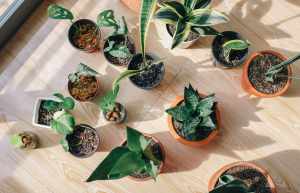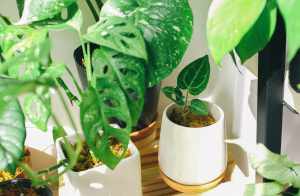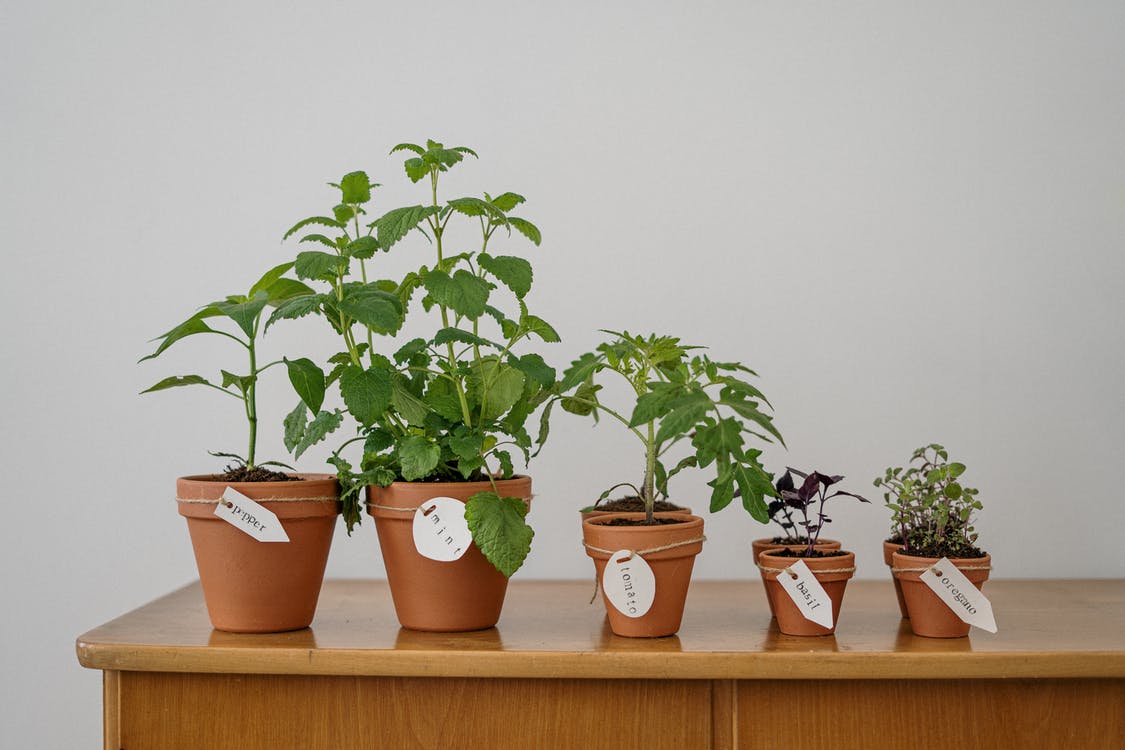Table of Contents
Don’t you wonder how does the mechanism of a plant work? Don’t their silent yet living nature amaze you? Well, just like many others, if you also wonder how plants absorb minerals and water, read our blog! We will give you a vivid idea of how are water and minerals transported in plants! Also, we have given a detailed guide on how the plant mechanism works! Read on, and you will be in complete amazement!
How are water and minerals transported in plants?
Xylem is the primary source through which water and minerals are transported in plants. It helps to transfer water from the roots to the leaves. At the same time, phloem transfers the food from the leaves to the plant. However, during this process, water will evaporate from leaves and will take water from roots.
In biology, transport means to carry a substance made or absorb in the organism and then distribute it to all other body parts. In plants, minerals and water are transported to the other parts.
Moreover, you will find the food prepared in the leaves needs to be transported too. Plants make food through the method of photosynthesis and the minerals for the making of protein.
Two types of tissues perform this function:
- Xylem
- Phloem
2 types of elements of the xylem tissue
If you are wondering how are water and minerals transported in plants, then let us tell it is through the two xylem tissue elements. And they are called:
- Xylem Vessels
- Tracheid
Xylem vessels
You must know xylem vessels are long tubes made of dead cells and have a link from end to end. Moreover, this tube is non-living and runs from the roots of plants and then through stems and finally reaches the leaves. The end walls of all the cells are cracked so that a new open tube can be formed.
Furthermore, they do not have nuclei and cytoplasm. The walls of these vessels are formed of lignin or cellulose. Xylem vessels not only transfer minerals and water but also provide strength to stems so that they can be upright.
This happens because lignin is strong and very rigid. Moreover, woods are made of the lignified xylem vessels. They also have pits in the cell walls, and here lignin is not found. Either only xylem vessels or both of them (xylem vessels and tracheid) help to transfer water in the plants.

Tracheid
If you are thinking, how are water and minerals in plants that are nonflowering, well, it is through the tracheid. Tracheid is the only tissue that transfers water in nonflowering plants. Moreover, they are also dead cells that have lignified walls. However, they have no open ends.
Also, they are spindle-shaped, long, and thin cells. Water flows from one tracheid to a different one through the help of the pits. Every plant has tracheid tissues.
Before knowing the mechanism of how are water and minerals transported in plants, there are few terms that you need to understand:
Epidermis
The epidermis is the outer layer of cells in the roots of the plants. Also, their thickness is the same as a cell.
Endodermis
These cells are present around vascular tissue, that is, phloem and xylem, in the plants’ roots. It is the innermost layer of the cortex.
Root Cortex
They are a part of the root that is between the endodermis and epidermis.
Root Xylem
Xylem tissues situated in roots are known as root xylem. They are located at the center of the root.
Endodermis, epidermis, and root cortex are all located between the root xylem and root hair. Hence, the water that will be absorbed by root hairs from the soil first will pass the root cortex, epidermis, endodermis and finally reach the root xylem.
Besides, minerals exist in the soil. All plants take the minerals and nutrients in an inorganic method like phosphates and nitrates. These minerals dissolve in water to make an aqueous mixture.
Hence when water is transported from the roots to the leaves, you will find the minerals in the water to transport as well.
The transport of water and minerals in plants – brief explanation
All the plants absorb minerals and water from roots that have root hairs. Moreover, these root hairs rise the surface part of roots so that minerals and water can absorb the micronutrients presents in water.
Furthermore, the root hairs are in contact with water that exists between soil particles. Do you know how water and minerals move from roots to leaves? Or how are water and minerals transported in plants?
Well, plants have many pipe-like vessels which transport nutrients and water from the soil. Besides, this vessel is made of special cells that form the vascular tissues.
Moreover, tissues are a group of cells that perform certain functions in any organism. This vascular tissue that transports minerals and water in plants is called the xylem.
The xylem vessels of roots and the xylem vessel of the stem of the plant are connected. Hence, the water goes in from the root xylem vessel to stem xylem vessels. Furthermore, it reaches the leaves of a plant from the petiole.
Also, the plants use 1% or 2% of water in photosynthesis. The rest of the water is evaporated.
How are water and minerals transported to the leaves?
We have talked about how are water and minerals transported in plants. So, now let us further discuss how it transported to leaves. Well, it is the same process. Xylem travels around the plant and delivers nutrients and water.
Moreover, these vascular tissues are spread all over the pant from the roots to the leaves. The water transfers upwards with the help of the xylem tubes.
What is transpiration?
The pressure at the bottommost part of a plant is high, whereas the pressure at the topmost part of the plant (mainly in the leaves) is low. Due to low pressure at the plant top, the water flows upward towards the xylem vessels to the leaves of the plants.
The nonstop evaporation of water from the leaves of the plant is known as transpiration. And that is the reason why the pressure is low at the topmost part of the plant.
Moreover, the leaves of the plants have tiny pores known as stomata. Due to them, the water evaporates in the atmosphere. Hence, it reduces pressure at the topmost part of xylem vessels, and the water goes up in them.

Transportation of food and other materials
The food that is made through the method of photosynthesis in the leaves of the pants has to be transferred to the other parts such as roots, stem, branches, etc. Thus, these foods are transferred to the different parts of a plant by a type known as phloem.
Moreover, the process by which the food is transfer to other parts of the plant is known as translocation. Also, the food which is made in the leaves is simple sugar.
Phloem exists in all parts of the plants.
Sieve Tubes
Phloem in plants is a long tube that is made of numerous living cells and linked end to end. Sieve tubes are the living cells of the phloem. Moreover, the end walls of the cells in the phloem have sieve plates that have small holes in them.
Furthermore, by these holes, the food passes through the phloem tubes. Also, sieve tubes have cytoplasm, but they have no nucleus.
Every sieve tube cell has another cell with them which has a nucleus and numerous other organelles. Also, the cell wall of the sieve tubes has cellulose, but they have no lignin.
Mesophyll cells of the leaves are where the food is made. From here, it goes in the sieve tubes of phloem. All the phloem tubes are connected. Once the food goes to the tube of the leaves, it is then transferred to all the other parts of the plant.
Why is the transport of food essential?
Three reasons why a plant needs food for:
- Energy
- Maintaining the life
- Building all the parts
Also, other materials like hormones are made in the tips of the roots, and the shoots are transferred by the phloem tubes.
Mechanism of transportation of food in the plants
The food that is made in the leaves of the plants is loaded in the sieve tubes of the phloem tissue with the help of using the energy from the adenosine triphosphate (ATP). Then through the process of osmosis, water goes in the sieve tubes that have sugar. Thus, it raises the pressure in the phloem tissues.
Moreover, this creates a high pressure produced in the phloem tissue. This moves the foods to other parts of the plant that has less pressure. Thus, this is the way food is transfer to all the parts of the plant with the help of phloem tissue.

Rate of transpiration
You will find the amount of absorption of water through the root increases when the rate of transpiration increases. Some factors disturb the amount of transpiration and also disturbs the water uptake through the plant. A plant will wilt if there is water scarcity or the root is damaged.
Reasons Affecting Rate
How are water and minerals transported in plants depends on the rate of transpiration? Some of the factors include:
- Humidity
- Light Intensity
- Temperature
- Wind Speed
The below table shows that the effect on transpiration rate:
Humidity – Effect: Decrease
The diffusion process of the water vapor slows down when the leaves are surrounded by a moist atmosphere.
Light Intensity – Increased Effect
You will notice stomata open up wider to let carbon dioxide enter in higher amounts to allow photosynthesis.
When it is increased, the stomata open wider, and more carbon dioxide (CO2) will enter the leaves for photosynthesis.
Temperature – Effect: Increased
Diffusion and evaporation are much faster at high temperatures.
Wind Speed – Effect: Increased
Moving air removes water vapor, increasing the rate of diffusion of water vapor from the leaf.
Leaf Adaptations
In dry or hot environments, leaves are adapted to decrease transpiration. For instance, the stomata might open only at night and closes during the day. This is exactly the opposite of what generally happens. Thus, it means the stomata are shut when the rate of transpiration will be the greatest.
Cactus has adapted to the dry and hot climate. The table below states other adaptations in the dry and hot climate:
Less number of the stomata
This will reduce the rate of transpiration.
Leaves reduce to spines
This decreases the surface area for the transpiration.
Leaf hair, Stomata sunk in, and rolled leaf
This will trap the moist from the air. Thus, it will increase the humidity and decrease the diffusion of the water vapor.
Waxy Leaf Epidermis or Cuticles
Resistant to water and thus it will stop the evaporation.
One of the examples which have adapted all these is Marram grass that grows on the dunes.
Investigating Transpiration
The rate of transpiration is investigated by measuring the decrease in the mass that happens caused by water loss. Sometimes it can also be measured by the volume of water absorbed.
Reduction in mass
Cut the leaf from a plant. Now one or both sides might be covered with grease to stop the transpiration. The table below shows the results:
Here we are taking four leaves to show the difference.
Leaf 1
Surfaced coved with grease – None.
40% decrease in mass.
Leaf 2
Surfaced coved with grease – Only on the upper side
36% decrease in mass.
Leaf 3
Surfaced coved with grease – Only on the lower side
4% decrease in mass.
Leaf 4
Surfaced coved with grease – Both.
2% decrease in mass.
In the above table, it is clear that the maximum transpiration occurs from the lower side of a leaf.
The comparison:
Covering the upper side caused almost the same water loss as to the no coating side. [leaf 1 vs. leaf 2]
Covering the lower side caused almost the same water loss as a coating on both sides. [leaf 4 vs. leaf 3]
The volume of the water absorbed
You will find a potometer to measure the volume of the water. And to do that, most of the time, people use a leafy shoot.
A potometer includes:
- The capillary tube
- A scale that will measure the distance covered by the bubble in a capillary tube.
- Container of the water
- A rubber tube that will connect the capillary tube to a stem of a leafy shoot.
The rate of the water uptake depends on how fast the bubble moves. Thus, better rate of transpiration.
Final Thoughts
In today’s post, we learned about how are water and minerals transported in plants, xylem, phloem, and the rate of transpiration. And you also know how the xylem and phloem help to transport all the nutrients and water. Aren’t you amazed at how the mechanism of the plant works? Well, you must be!




